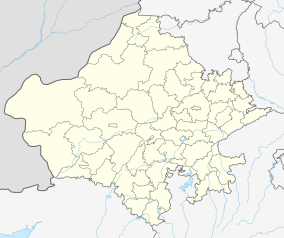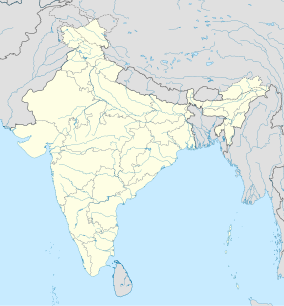Mukundara Hills National Park
| Darrah National Park | |
|---|---|
Map of India | |
| Location | Rajasthan, India |
| Nearest city | Kota |
| Coordinates | 24°52′05″N 75°51′22″E / 24.868°N 75.856°E[1] |
| Established | 2004 |
Darrah National Park in Rajasthan, India is a national park established in 2004 consisting of three wildlife sanctuaries: Darrah Wildlife Sanctuary, Chambal Wildlife Sanctuary, and Jawahar Sagar Wildlife Sanctuary. It is located within the Kathiawar-Gir dry deciduous forests' ecoregion.[2]
History
The national park contains large tracts of forests formerly part of the Maharaja of Kota's hunting grounds. The park was embroiled in a political controversy over its nomenclature, when the Bharatiya Janata Party state government revoked the decision that it be called the Rajiv Gandhi National Park.[3]
Asiatic lion Reintroduction Project

Like Sita Mata Wildlife Sanctuary, Darrah was one of the places which were considered for the reintroduction of the Asiatic lion.[4][5] The lion used to occur in Rajasthan,[6] but is now confined to Gujarat, in and around Gir Forest National Park.[7]
See also
- Arid Forest Research Institute (AFRI)
- Indian Council of Forestry Research and Education
- Jawahar Sagar Dam
- Wildlife of India
References
- ^ "Darrah Sanctuary". protectedplanet.net.
- ^ "Kathiarbar-Gir Dry Deciduous Forests". Terrestrial Ecoregions. World Wildlife Fund. Retrieved 13 February 2017.
- ^ The Hindu : National : Rajasthan to go ahead with national park
- ^ Walker, S. (1994). Executive summary of the Asiatic lion PHVA. First draft report. Zoo’s Print: 2–22.
- ^ "Asiatic lion". Wild Cats: Status Survey and Conservation Action Plan (PDF). Gland, Switzerland: IUCN/SSC Cat Specialist Group. 1996. pp. 17–21. ISBN 2-8317-0045-0.
{{cite book}}: Unknown parameter|authors=ignored (help) - ^ Sharma, B.K., Kulshreshtha, S., Sharma, S., Singh, S., Jain, A., Kulshreshtha, M. (2013). "In situ and ex situ conservation: Protected Area Network and zoos in Rajasthan". In Sharma, B. K.; Kulshreshtha, S.; Rahmani, A. R. (eds.). Faunal Heritage of Rajasthan, India: Conservation and Management of Vertebrates. Heidelberg, New York, Dordrecht, London: Springer Science & Business Media.
{{cite book}}: CS1 maint: multiple names: authors list (link) - ^ Singh, H. S.; Gibson, L. (2011). "A conservation success story in the otherwise dire megafauna extinction crisis: The Asiatic lion (Panthera leo persica) of Gir forest" (PDF). Biological Conservation. 144 (5): 1753–1757. doi:10.1016/j.biocon.2011.02.009.


